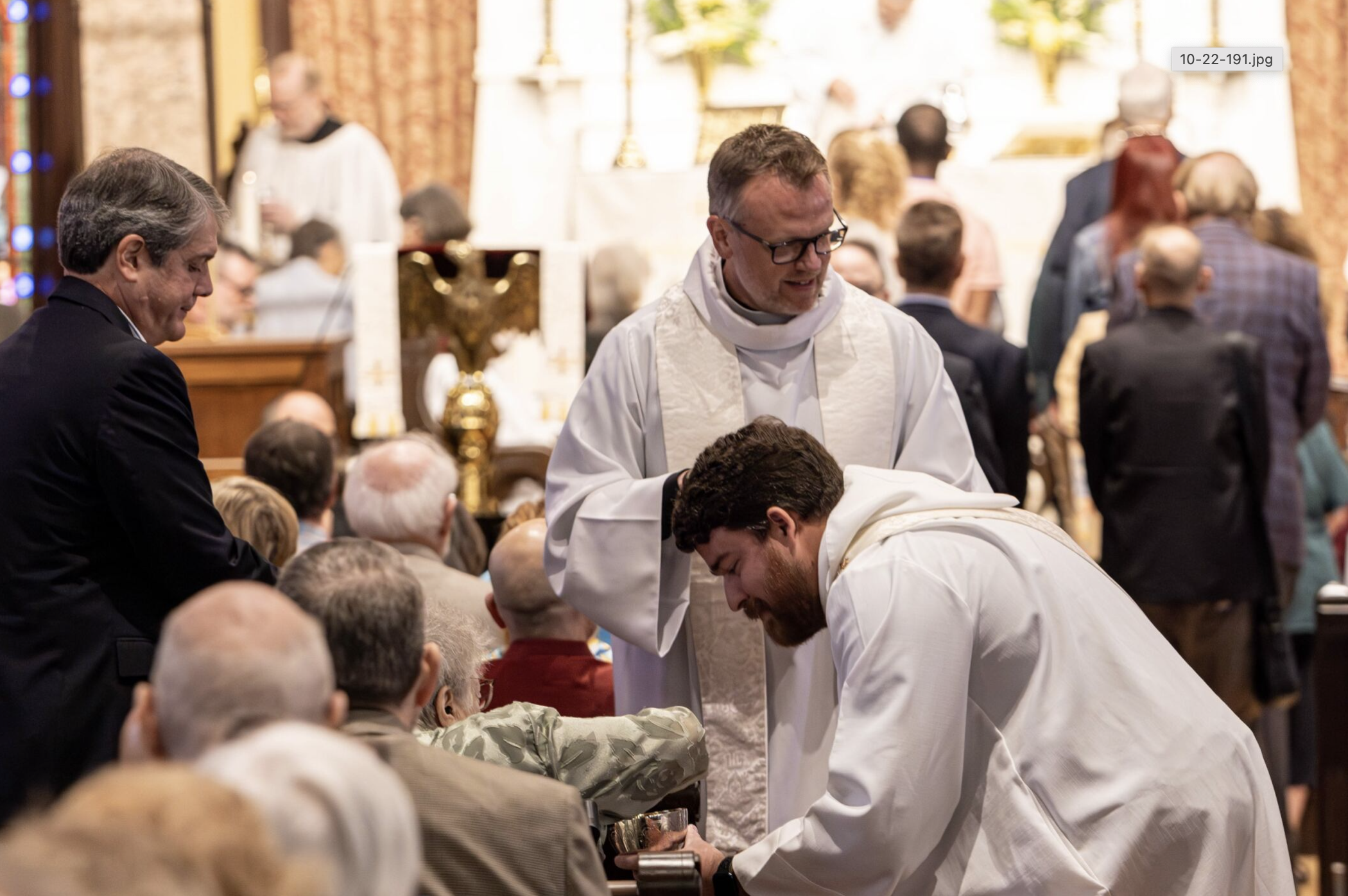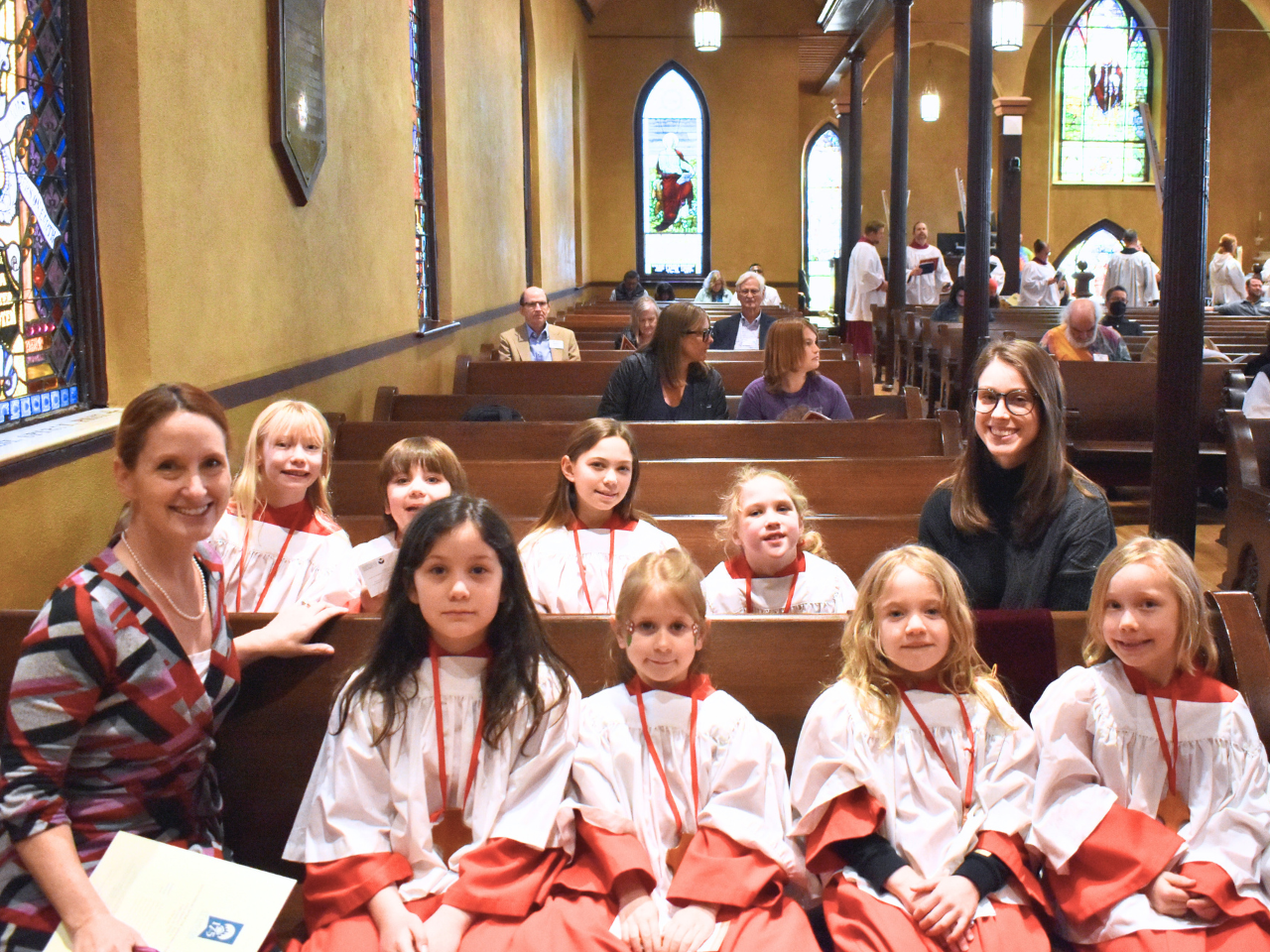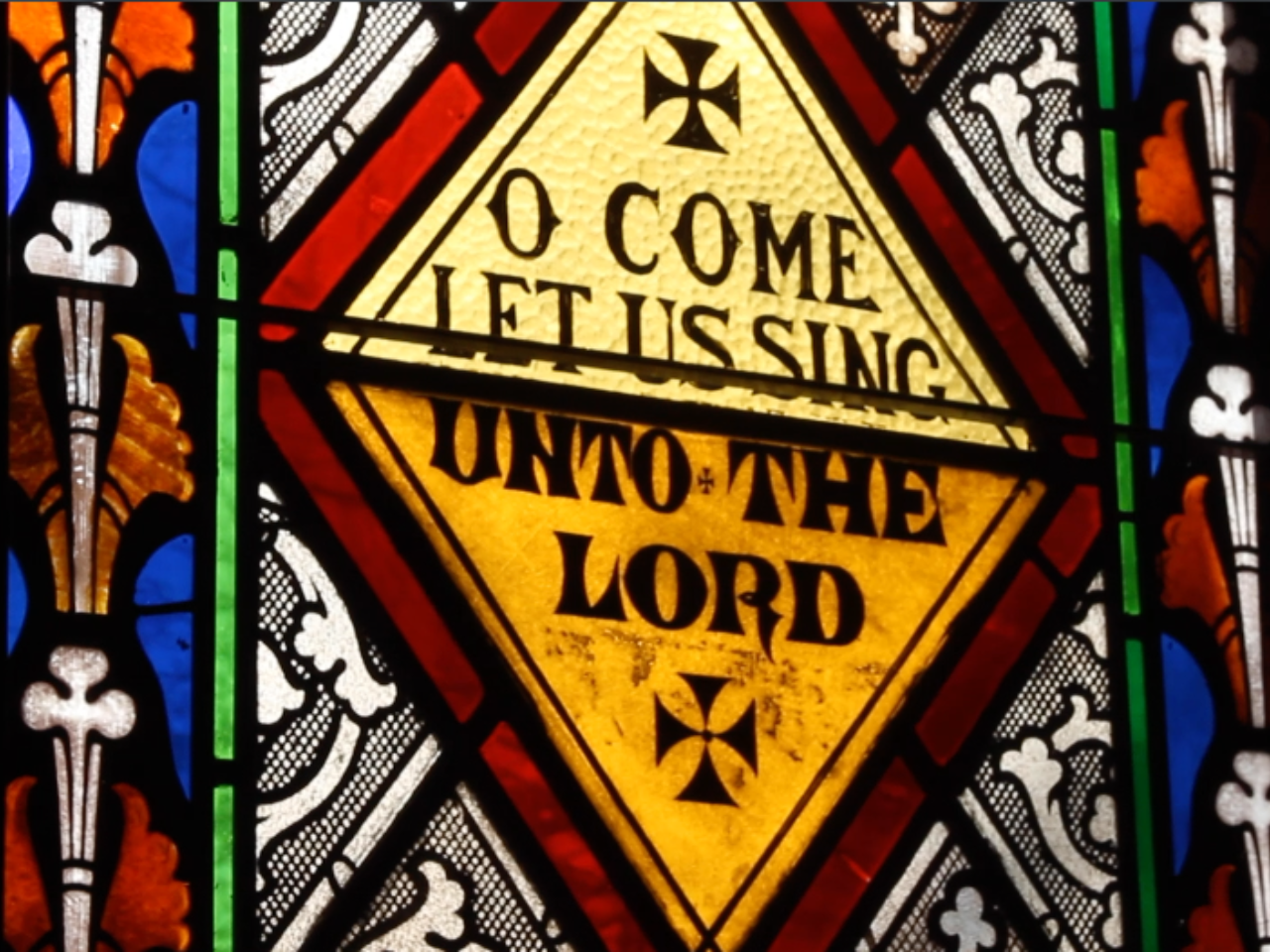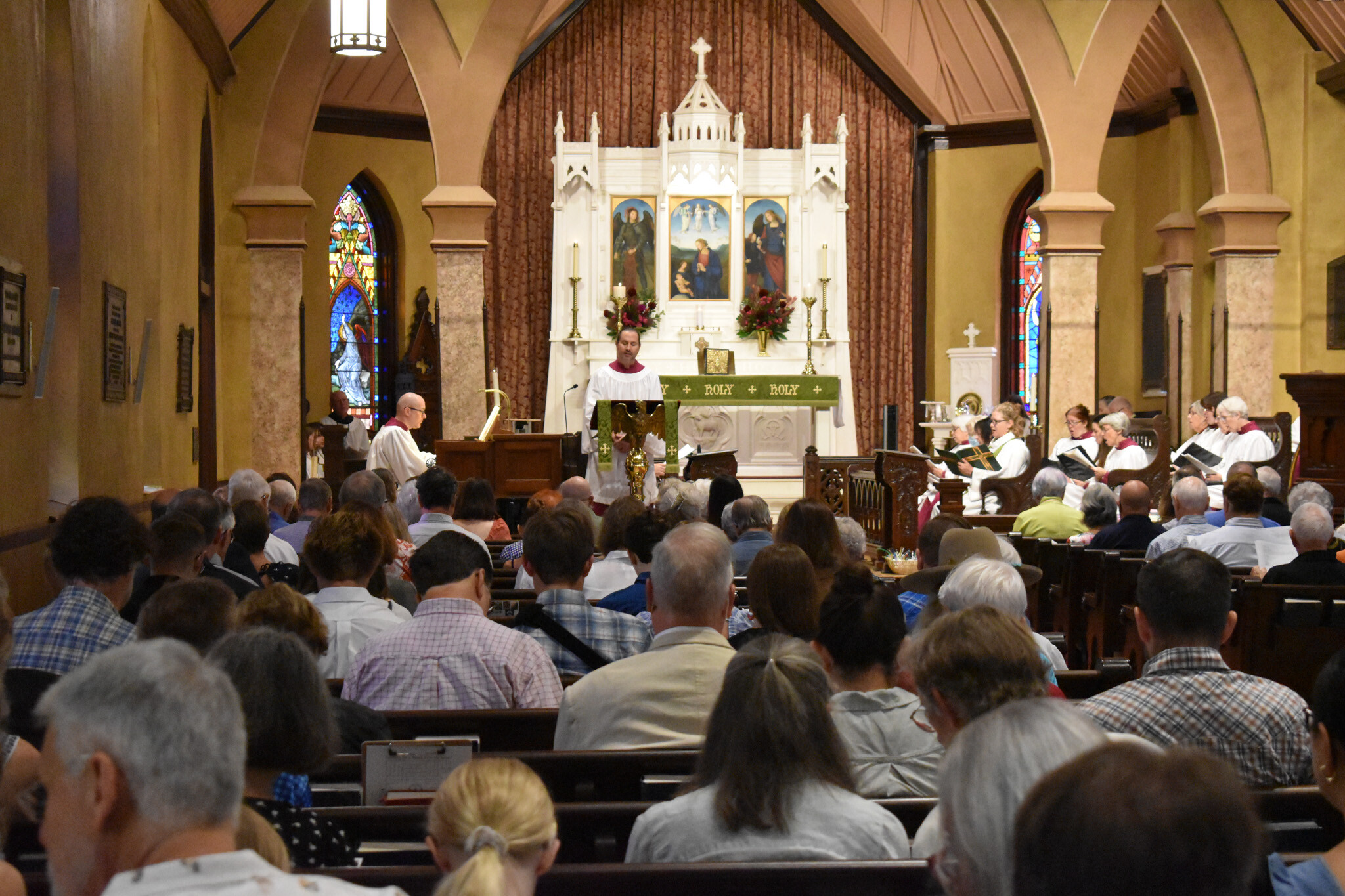
On February 2, the Church celebrates the Presentation of Our Lord Jesus Christ in the Temple. Because this date is a Sunday this year, we all have the opportunity to keep the feast.
On the fortieth day after the Nativity, St Luke’s Gospel tells us, Sts Mary and Joseph took the infant Jesus to the Temple for the mother’s ritual purification after childbirth and the redemption of the firstborn son.* Our Sequence hymn at 11:15, ‘O Zion, open wide thy gates’ [257], which we have set to the gracious and familiar tune ‘St Botolph’, points to the perceptiveness of the Blessed Mother as well as of those whom the Holy Family encounters, who saw the true identity and path of the child:
The aged Simeon sees at last
his Lord, so long desired,
and Anna welcomes Israel’s hope,
with holy rapture fired.
But silent knelt the mother blest
of the yet silent Word,
and pondering all things in her heart,
with speechless praise adored.
Simeon and Anna also appear in our Entrance hymn, ‘Angels, from the realms of glory’ [93]:
Saints before the altar bending,
watching long in hope and fear,
suddenly the Lord, descending,
in his temple shall appear.
The latter couplet (echoed in our Communion hymn, ‘Let all mortal flesh keep silence’ [324]) quotes the Lesson from the prophet Malachi, whose continuation points to the other layer of meaning in the feast:
...who can endure the day of his coming, and who can stand when he appears? For he is like a refiner's fire and like fullers’ soap; he will sit as a refiner and purifier of silver, and he will purify the descendants of Levi and refine them like gold and silver, until they present offerings to the Lord in righteousness. Then the offering of Judah and Jerusalem will be pleasing to the Lord as in the days of old and as in former years.
For the Presentation is a celebration not only of Christ’s advent in the flesh, but also of his final advent in glory, the consummation of the marriage between Christ and his Church which is celebrated at the Epiphany (please see the Music Notes for 2025-01-12). An antiphon for the present feast reads, ‘Adorn your chamber, O Zion, and receive Christ the King’: and every church and its sanctuary; its altar and its tabernacle, traditionally placed under a ciborium or baldachin that is exactly like the chuppah at a Jewish wedding; the womb of the Blessed Virgin and the heart of every believer – each and all are the site of the most intimate encounter with the Christ.
The Introit chant sung at 11:15 (also the basis of the Communion anthem at that service, written by living composer Carlotta Ferrari, as well as of the organ prelude by living composer Gerald Near), tells us what it is we receive when we, as the antiphon urges, receive Christ:
Your loving-kindness have we received [or, awaited], O God, in the precints of your temple...
Psalm 48.8
*The Purification and the ritual ‘uncleanness’ it was meant to undo (not necessarily of either the physical or the moral sort) have ultimately to do with the breaking of boundaries, the contact with the fundamental and mysterious force of life and the concomitant risk of death, inherent in childbirth, and the felt need to reintegrate the steward of such power into the everyday life of the community. (Any breaking of such physical and ontological boundaries, not only in processes related to reproduction, but also in disease and death – and on the other hand in priestly service in the Sanctuary – resulted in ritual impurity. The ‘Churching of Women’, now succeeded by the ‘Thanksgiving for the Birth or Adoption of a Child’ [BCP 439], continued in Christian usage). For this the Holy Family offer two young turtle-doves, the sacrifice appointed for those who could not afford a lamb; this fact reminds us of Our Lord’s humility, and the sacrifices themselves, one to be burnt up entirely, the other to be eaten by priest or offerer, point to the offering of Christ (himself the perfect Lamb provided by the LORD, as to Abraham) on the Cross and in the Eucharist.
The Presentation refers to the Israelite tradition that, originally, all firstborn sons were to be dedicated to God as priests (perhaps replacing a pagan child sacrifice), and that subsequently the sons of the tribe of Levi were substituted for the firstborn of all houses, who instead, for five pieces of silver, could be ‘redeemed’, or bought back, from the dedication that would previously have been required of them. The irony, of course, was that this child – who was indeed to become a sacrifice – was the High Priest and ‘the one to redeem Israel’.





Login To Leave Comment